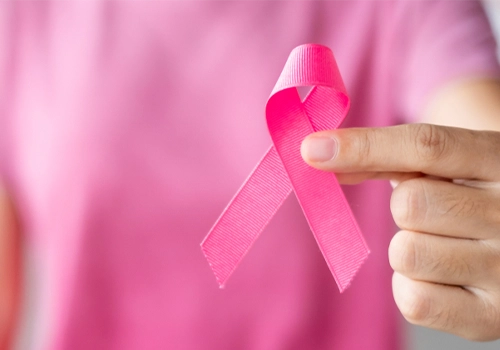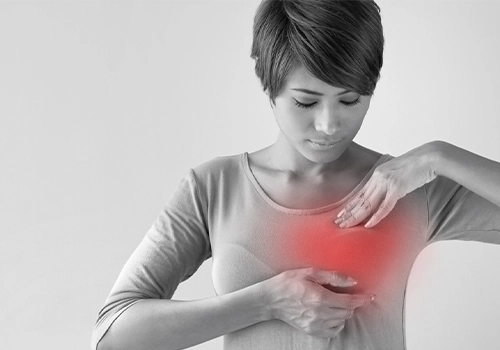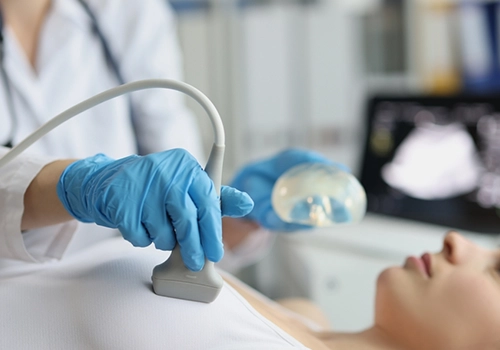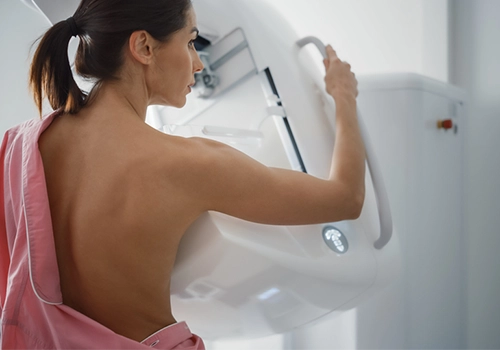Breast Cancer
Breast cancer is the most common type of cancer among women, with nearly one in eight women being diagnosed with it during their lifetime. Although rare, men can also develop this disease. It typically occurs in women over the age of 50 but can manifest at any age. Individuals with a family history of breast cancer, especially in their maternal lineage, are at higher risk of developing this disease.
Furthermore, lifestyle factors such as an unhealthy diet, lack of physical activity, and radiation exposure can also increase the risk of breast cancer. Early onset of menstruation or late onset of menopause can contribute to breast cancer as well. Women who use contraception methods after the age of 30 and remain childless are more susceptible to this disease.
The use of contraceptive pills also elevates the risk of breast cancer. Breast cancer develops when there’s abnormal cell growth in a part of the breast tissue, leading to rapid cell division instead of the normal process of cell death to make room for new cells.
The typical physical indicators of breast cancer encompass noticeable alterations in breast shape, unusual lumps within the breast tissue, inverted nipples, abnormal discharge from the nipple, and palpable lumps in the armpit, upper arm, supraclavicular area, and neck. If any of these symptoms occur, it is advisable to seek consultation with a medical specialist while maintaining composure and calm.
However, it’s essential to keep in mind that the presence of these symptoms doesn’t necessarily indicate the presence of cancer; they may be symptoms of a medical condition that can be effectively treated with non-invasive therapies.
The aim of this discourse is solely to disseminate information about the disease and encourage prompt action. In the case of early symptoms, it is recommended to seek medical care from a specialist physician and undergo breast cancer screening at a reputable center.
What is Breast Cancer
Breast cancer is a malignancy that can disrupt and challenge the cellular division process within breast cells. It is noteworthy that uncontrolled proliferation of breast cancer cells can lead to a significant increase in their numbers. Furthermore, it should be mentioned that there are various types of breast cancer. Several of these types are highlighted below:

- Medullary carcinoma
- Mucinous Breast Cancer
- Inflammatory Breast Cancer
- Invasive Lobular Carcinoma
- Invasive Ductal Carcinoma
Invasive Lobular Carcinoma
In this particular form of breast cancer, initial malignant cell proliferation occurs in the lobular region and then progresses to affect various areas of the breast, sometimes extending beyond its confines.
Invasive Ductal Carcinoma
This type of cancer involves the formation of cancer cells within the ducts and gradually spreads to different parts of the breast and beyond over time. These cells can migrate from the breast and spread to various parts of the body.
Breast cancer screening encompasses a series of tests, including mammography, ultrasound, and breast biopsy, which complement face-to-face and physical examinations to determine the presence of the disease.
When breast cancer is diagnosed, the stage and extent of its spread to other parts of the body can be determined through further tests and research. The goal of these actions is to gain a comprehensive understanding of the disease and design an appropriate treatment regimen.
It is essential to note that the presence or occurrence of such symptoms does not necessarily indicate cancer. Therefore, the reader of this article should keep in mind that self-examination at home or by non-specialists should not lead to fear or anxiety. Instead, one should be aware of the significant advances in medical science regarding the treatment of various types of cancer. So, there is no need for undue concern, but swift action can significantly reduce the course of treatment.
After diagnosis and determining the type and stage of cancer, healthcare professionals consider various treatment options and methods to enhance the patient’s well-being. The removal and elimination of malignant neoplastic cells is a treatment method that involves removing the entire breast or the affected area containing cancer cells while preserving healthy tissue.
To reduce and shrink malignant cells, radiation therapy, and chemotherapy are among the therapeutic interventions performed by a specialized team. The duration of the treatment regimen depends on the speed of disease progression, the frequency of radiation and chemotherapy sessions, and other factors related to the type of treatment administered by the healthcare team.

It is worth noting that at all stages of the treatment process, the participation of a psychologist and a nutrition specialist is highly recommended. As mentioned earlier, the diagnosis of breast cancer involves a series of stages, which are detailed below:
Mammography
Mammography is a technique used to examine breast tissue to detect breast cancer, which is one of the most common cancers among women. As a result, it is recommended that women over the age of forty undergo regular mammography as a tool for identifying tumors in their breasts.
Early identification of breast cancer via mammography, coupled with potent treatment approaches, plays a crucial role in eliminating and treating breast tumors. However, given that this diagnostic procedure can yield inaccurate results, additional diagnostic tests are conducted to ascertain the characteristics of the tumor.
Ultrasound in Breast Cancer
Ultrasound is a method that uses waves to evaluate breast tissue masses. This allows physicians to immediately determine whether a female patient has breast cancer, thus eliminating the need for tissue biopsy.
Jonathan Affair and his colleagues developed this technique in the 1990s at the University of Texas Medical School in Houston. A study conducted in the United States on 80 women using a new method called elastography was able to distinguish between benign and malignant masses with nearly 100% accuracy.
Benign masses are generally less solid compared to cancerous tumors. Elastography potentially has the capability to save thousands of women from the stress, financial burden, and discomfort associated with biopsies. Biopsy involves the removal of cells from the breast, which are then examined under a microscope. This process can be performed with a surgical knife or a needle.
In the typical practice of ultrasound, a medical specialist or technician places a handheld device on the skin’s surface to transmit high-frequency sound waves to the body. The echoes produced, which are sent by organs and tissues, are then processed by a computer to generate visual images. Ultrasound images of growing fetuses are a familiar example of this. However, in the case of elastography, motion is also taken into consideration.
By manipulating the handheld device on the breast shelf, echoes collected before and after compression or movement of tissue can highlight areas of firm tissue as dark and soft tissue as light. According to Dr. Affair, elastography is capable of identifying the location of cancerous lesions in the breast with greater accuracy than regular ultrasound.

Biopsy (Sample Collection in Breast Cancer)
Biopsy is performed in cases of breast cancer to assess palpable masses in the breast and abnormalities detected in mammography, such as small calcium deposits or fluid-filled cysts. This method also aids in evaluating nipple issues, such as bloody discharge, and helps determine whether a breast mass is malignant or benign.
Types of Biopsy in Breast Cancer
There are many biopsy methods used for breast cancer, and the choice of method depends on the location and size of the tumor. The physician must select the appropriate technique from the available options. Biopsy can be performed under general or local anesthesia. For the latter, a local anesthetic solution is injected into the breast to numb any sensation.
- Fine Needle Aspiration Biopsy (FNA):
In the FNA biopsy technique, a thin and fine needle is used to penetrate an area or mass suspected to indicate breast cancer. By extracting a minute amount of fluid or tissue, the goal of this method is to determine whether the mass is a cyst filled with fluid or a solid lump. This process is known as FNA biopsy.
- Core Needle Biopsy:
A significant needle is inserted into the mass or area of the breast believed to house malignant neoplasms. Small cylindrical portions of tissue, known as cores, are extracted. It’s important to note that this technique eliminates the need for incision.
- Open Biopsy (Surgery):
During this medical procedure, a physician removes a portion or the entire mass or area potentially indicative of breast cancer. In specific cases, the size or location of the mass in the breast may be challenging to identify, so alternative approaches are sought. Consequently, a technique known as localization is used, where a fine needle or wire is inserted into the breast tissue.
Using X-ray images, the physician guides and tracks the needle accurately to determine the affected area. Various methods and tools may be employed to assist in performing biopsy procedures.

- Stereotactic Biopsy:
A stereotactic biopsy involves creating a complete three-dimensional representation of the breast using a computer and mammography. This 3D image then guides the needle to the precise location of the breast mass or desired area.
- Vacuum-Assisted Core Biopsy:
During this medical procedure, a minute incision is made in the breast wall. A hollow probe is subsequently introduced through this opening to the chest wall, and, using advanced imaging techniques such as magnetic resonance imaging (MRI), X-rays, or maneuverable ultrasound, it is maneuvered.
- Ultrasound-Guided Biopsy:
Ultrasound-guided biopsy involves using ultrasound images of the breast mass or tissue. During this medical procedure, the biopsy is performed under ultrasound guidance, placing the needle precisely at the suspected breast cancer site in the breast.
Surgery
The choice of surgical method is determined based on the nature and extent of the neoplasm, in addition to the individual’s overall health status.
Lumpectomy:
Lumpectomy, also known as breast-conserving surgery, is a common approach in patients with early-stage breast cancer. The surgical process involves creating an incision at the tumor site in the breast and removing the tumor along with a portion of breast tissue. After the procedure and partial recovery, reconstructive and cosmetic procedures may be performed.
Mastectomy:
Mastectomy is considered a surgical method for preventing or treating breast cancer by removing breast tissue. It is an appropriate treatment option for individuals with early-stage breast cancer.
Mastectomy is usually recommended in cases where the tumor is located in various areas of the breast, has a significant size, or when radiation therapy is not feasible or ineffective. Furthermore, breast size may also influence the decision to undergo mastectomy.

Different Types of Mastectomy:
Mastectomy is a surgical procedure that involves the complete removal of one or both breasts. it is commonly used as a treatment for breast cancer or as a preventive measure in cases of suspected cancer. The extent of breast tissue removal depends on the size and spread of the tumor, as well as adjacent breast tissue. In addition to removing the cancerous mass and breast tissue, the surgeon may need to remove lymph nodes under the arm and chest muscles in cases of disease progression.
Mastectomy is a surgical treatment that eliminates one or both breasts. usually as a treatment for breast cancer or as a preventive measure when cancer is suspected. The amount of breast tissue extraction is influenced by the size and accessibility of the tumor, as well as adjacent breast tissues. Additionally, in cases of disease progression, the surgeon may also remove lymph nodes under the arm and chest muscles.
- Prophylactic Mastectomy
Prophylactic mastectomy is a surgical procedure that can be employed as a preventive measure against breast cancer. The effectiveness of this type of surgery has been well-documented, demonstrating a reduction in the risk of breast cancer by up to 90%, commonly referred to as ‘risk-reducing mastectomy.’ Prophylactic mastectomy is often recommended for women with a prior history of breast cancer and those at a high risk of recurrence.
Individuals who consider this method must undergo comprehensive counseling and evaluation to assess potential risks, effects, complications, and outcomes thoroughly. Ultimately, prophylactic mastectomy should be reserved for those fully informed about the psychological and negative impacts associated with this procedure.
It is advisable that only individuals at a significantly elevated risk of breast cancer, due to specific factors, consider this surgical option. Women with specific medical concerns should consider this approach for breast cancer prevention in the future.
- Mutated RCA genes
- History of lobular carcinoma in situ (LCIS)
- Previous breast cancer diagnosis and a strong family history of breast cancer

- Simple or Total Mastectomy
Simple mastectomy involves the removal of all malignant breast tissue. Sentinel lymph node biopsy may be performed concurrently. It’s important to note that this surgical method does not include the removal of underarm lymph nodes or chest muscles.
- Radical Mastectomy
Radical mastectomy is the most extensive form of mastectomy. It includes the complete removal of breast tissue, including the nipple, areola, skin around the breast, underarm lymph nodes, and chest muscles, depending on the extent of the disease.
While this method was once the primary and most effective approach, advancements in technology have led to a decrease in its popularity in recent years.
- Modified Radical Mastectomy
The primary surgical treatment for breast cancer nowadays is the modified radical mastectomy. This method involves the complete removal of the breast, nipple, areola, surrounding areas, and underarm lymph nodes.
However, chest muscles are left untouched. During this surgery, the surgeon attempts to extract lymph nodes only when necessary, as complete removal of underarm lymph nodes can lead to arm swelling.
- Partial Mastectomy
In partial mastectomy, the surgeon removes the cancerous breast tissue along with surrounding tissues. This surgical technique involves the removal of a larger portion of tissue compared to lumpectomy.
- Skin-Sparing Mastectomy
In this newer surgical technique, the inner layer of the breast skin is preserved while removing breast tissue, the nipple, and areola. It is especially relevant for cases requiring immediate breast reconstruction after mastectomy.
- Nipple-Sparing Mastectomy
Subcutaneous Mastectomy, also known as Nipple-Sparing Mastectomy, involves the removal of all breast tissue while preserving the nipple. However, due to its limited applicability, it should be noted that further consideration is needed. It cannot be definitively determined whether it can be integrated into a fundamental option or not.
Radiation Therapy
After the surgical removal of cancerous cells, radiation therapy is employed to eradicate any remaining cancer cells. This therapeutic approach meticulously targets cancer cells and is typically administered five times a week. It’s worth noting that this non-invasive treatment carries minimal side effects for the patient.
Chemotherapy
Chemotherapy is a treatment method that involves the use of drugs to halt the growth of cancer cells or eliminate them. Including those that have metastasized to other areas of the body. The potential side effects of chemotherapy are determined by the specific drugs prescribed and may include side effects such as fatigue, decreased appetite, vomiting, or nausea.

Chemotherapy can be administered through intravenous, intra-arterial, or intraperitoneal injections by a medical specialist to combat cancer cells. On the other hand, targeted therapy entails the prescription of specific drugs designed to target the components of cancer cells.
Typically, chemotherapy is combined with other treatment modalities, especially in cases where cancer has advanced and requires surgery. These drugs are often prescribed before surgery to shrink the tumor or after surgery to remove any remaining cancer cells. General anesthesia may also be used during surgery. Treatment methods may vary, and a combination of treatments is often employed.
Recovery
Following a mastectomy, patients typically require an extended period of recovery and should allocate several weeks to this process. During this time, it is expected that patients may experience some discomfort. accordingly, they are provided with a series of exercises to maintain an adequate level of flexibility in their arms and shoulders, which contributes to effective recovery.
In the first week after surgery, patients may experience fatigue, pain, and discomfort. It is recommended that patients seek regular check-ups every three to six months for two to three years after completing treatment to ensure ongoing medical care.
The Last Word
Breast cancer, affecting nearly one in eight women and occasionally men, is influenced by factors like age, family history, and lifestyle. Recognizable symptoms include changes in breast shape, protrusions, and abnormal masses. While these signs prompt consultation, they don’t guarantee cancer.
Therefore we invite you to schedule a consultation with Dr. Maadico’s Medical Department Specialties For personalized guidance and a deeper understanding of your unique health profile. Take charge of your well-being with insights into prevention, treatment options, and answers to common questions.
Get a Free Consultation
FAQs
1.What is the cost of Breast Cancer treatment?
The cost of breast cancer treatment is influenced by various factors, including the expenses associated with initial diagnostic tests, as well as the costs related to various treatment methods such as surgery, chemotherapy, radiation therapy, hormone therapy, targeted treatment, and immunotherapy. Additionally, the ongoing costs of hospitalization and other follow-up care also play a significant role.

2.What are the ways to prevent Breast Cancer?
Breast cancer prevention starts with healthy habits including:
- Maintain a healthy weight
- Quit smoking
- Limit alcohol consumption
- Avoid post-menopausal hormones
- Eat a healthy diet, particularly one rich in fruits, vegetables, fiber, fish, and unsaturated oils
- Regular exercise
- Regular screening and self-examinations
- Preventive surgery may be recommended for women at high risk
3.Is Breast Cancer an inherited disease?
Yes, some breast cancers occur as a result of inheriting genes that contain certain mutations. However, hereditary breast cancer accounts for only 5 to 10% of all breast cancer diagnoses. Family history and genetic testing can help identify the risk of inherited breast cancer.
4.How long is the hospitalization period for Breast Cancer surgery?
The hospital stay for breast cancer surgery is typically 3 days or less. Procedures like lumpectomy may require a shorter stay (usually a day). If breast reconstruction or mastectomy is performed during the same surgery, the hospital stay may be extended up to a week.
5.What are the post-operative care procedures for Breast Cancer?
Post-operative care includes managing discomfort and potential complications, pain management, incision care, and drain care.
6.What is the role of nutrition in Breast Cancer development?
Good nutrition may reduce the incidence of breast cancer and the risk of breast cancer progression or recurrence. A healthy diet characterized by high intake of fruit, vegetables, fiber, fish, and unsaturated oils has a modest protective effect on breast cancer.
7.Does alcohol, smoking, and addiction play a role in Breast Cancer?
Alcohol is a carcinogen, and elevates the risk of breast cancer. Alcohol can change the way a woman’s body metabolizes estrogen, causing blood estrogen levels to rise, which in turn is linked to an increased risk of breast cancer. Smoking combined with heavy drinking can have a compounding effect on breast cancer risk.


